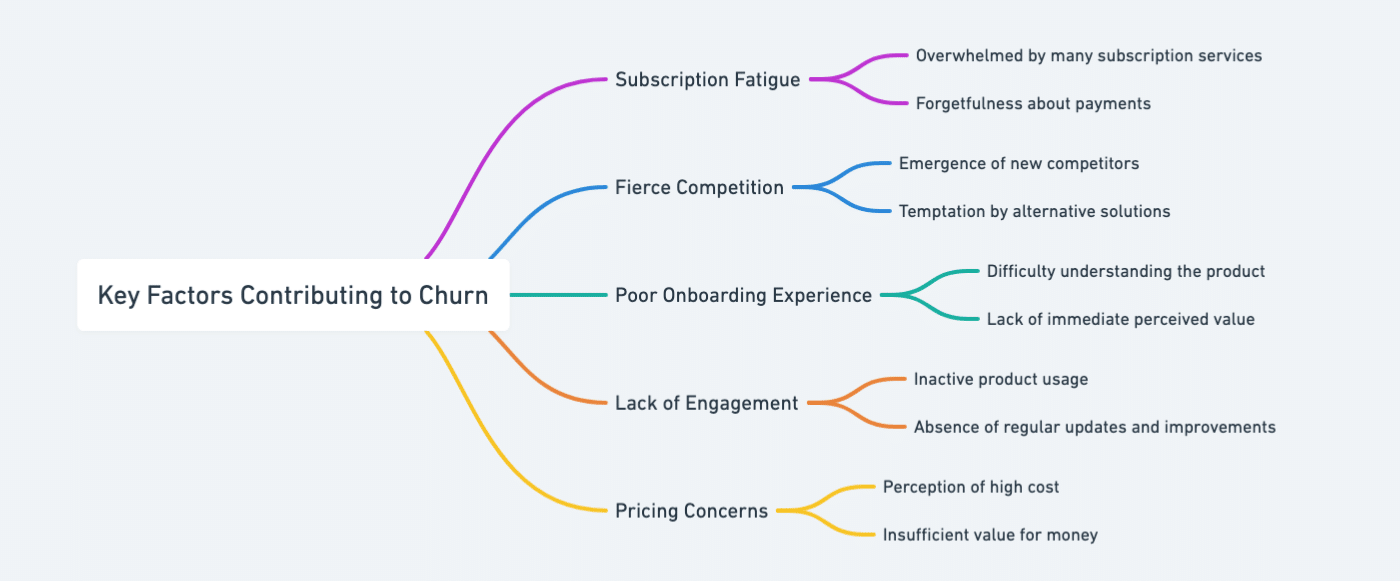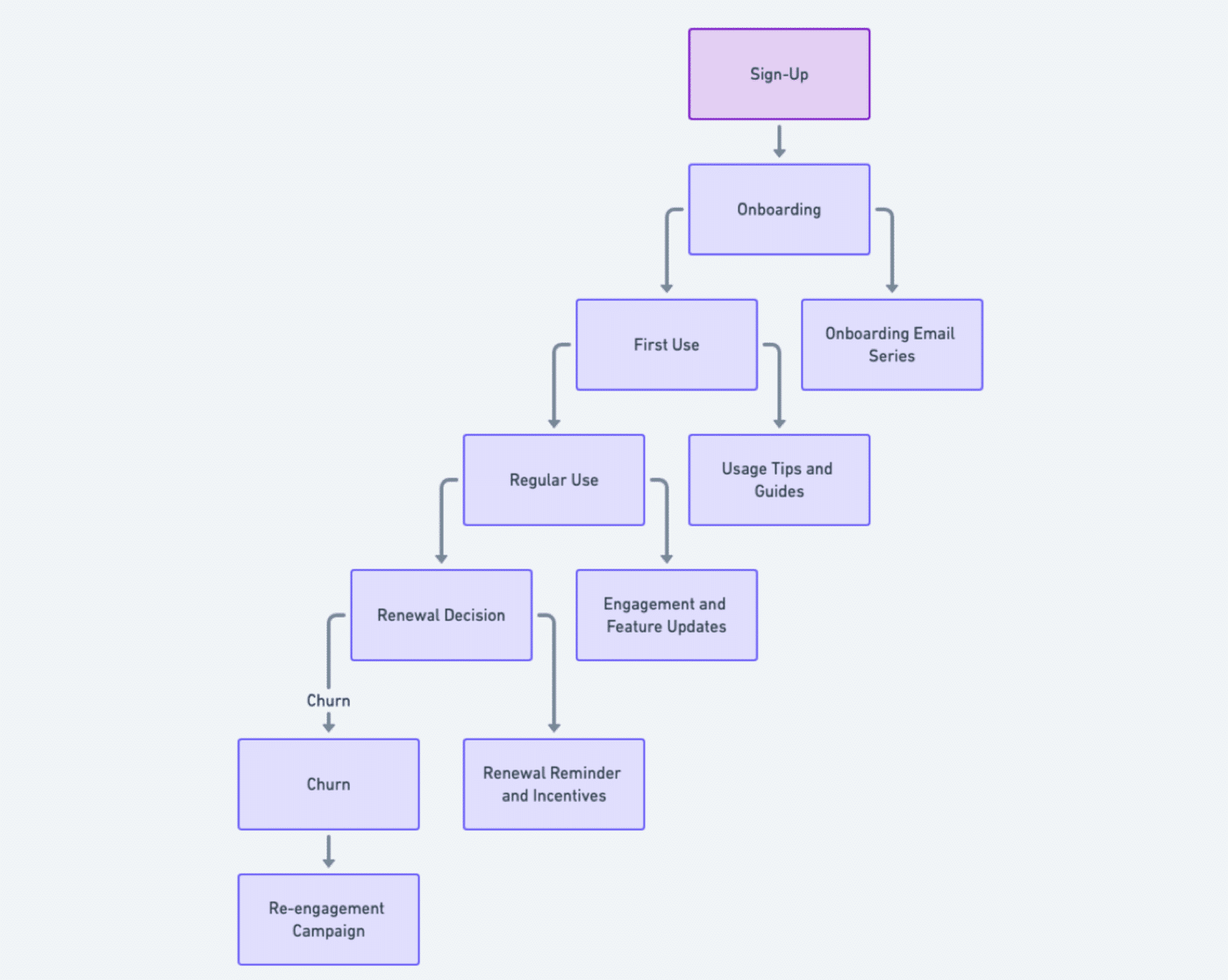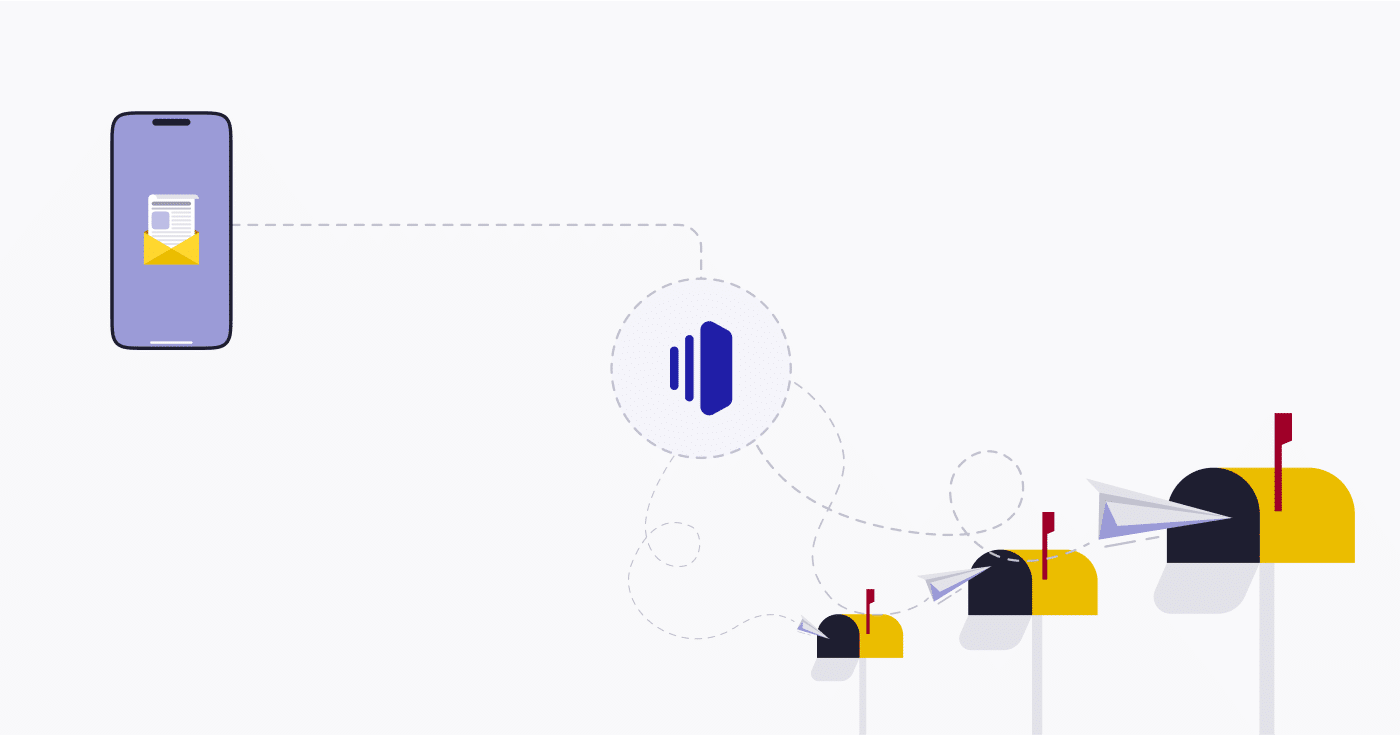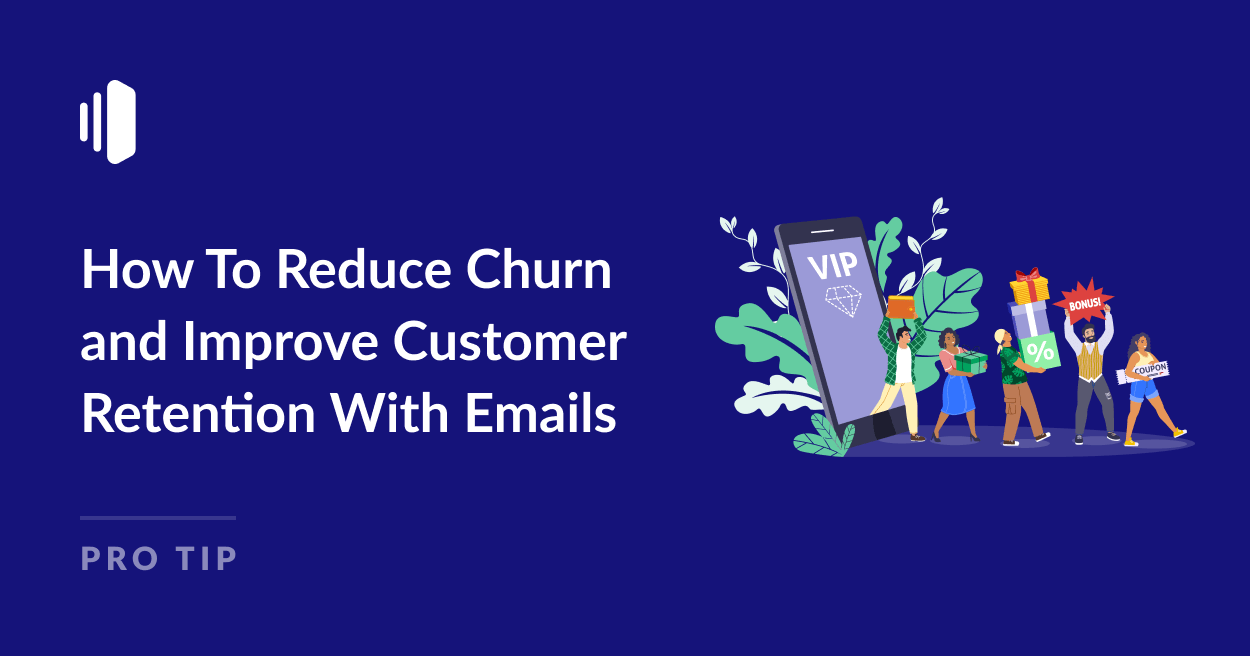In the competitive world of SaaS companies, where subscriptions can be canceled with a click, knowing how to reduce churn and improve customer retention rate can make a huge difference to your bottom line. After all, it’s far more cost-effective to retain existing customers than to acquire new ones.
Emails give you a direct line to your valuable customers, helping you build strong customer loyalty and offer valuable content that keeps them engaged. Whether it’s a simple transactional message or a carefully crafted campaign, the right email at the right time can make all the difference in reducing customer churn.
In this guide, I’ll offer some strategies and tips for using email to reduce customer churn, specifically how transactional emails (often overlooked) can make a surprising impact on customer retention.
Understanding Customer Churn
In the SaaS (Software-as-a-Service) business model, customer churn rate is simply the rate at which customers stop using your service.
This could be through cancellations, downgrades to a lower-tier plan, or even a gradual disengagement where the user simply stops logging in, leading to involuntary churn.
Churn is an unavoidable part of doing business. However, the goal is to keep it as low as possible through effective churn prevention strategies.
There are a few key factors that contribute to churn:

- Subscription Fatigue: With so many subscription services available, customers might feel overwhelmed or simply forget they’re paying for yours.
- Fierce Competition: New competitors are popping up all the time, and customers might be tempted by alternative solutions.
- Poor Onboarding Experience: If users struggle to understand your product or don’t quickly see its value during the onboarding process, they’re more likely to churn early on.
- Lack of Engagement: If users aren’t actively using your product or don’t see regular updates and improvements, they might lose interest.
- Pricing Concerns: Customers might find your product too expensive or feel they aren’t getting enough value for their money.
The consequences of high customer churn rate are significant. Not only do you lose recurring revenue, but you also have to invest more in acquiring new customers to replace those lost, leading to revenue churn.
High churn can also harm your brand reputation as dissatisfied churned customers are more likely to share negative reviews or experiences.
How to Combat Churn With Emails
The emails you send to your customers (either directly or via your website) are an important communication channel to deliver personalized messages, share valuable information, and guide users throughout their customer journey with your SaaS product.

Building Relationships
Unlike other forms of marketing, email allows for a one-to-one connection with your customers.
By personalizing emails to address them by name, acknowledging their specific actions or needs, and offering tailored recommendations, you make each individual feel valued, promoting a feeling of trust and customer loyalty.
Educating Users
Email is a great platform to educate users about your product’s features, updates, and best practices.
Whether it’s a welcome series introducing the basics, a tip of the week promoting an underused feature, or a detailed guide on how to maximize the value of your service, you can help users to make the most of your product, increasing customer success and reducing the risk of churn.
Driving Engagement
Regular communication through newsletters, announcements, or even invitations to webinars, promotions, or exclusive events, keeps your brand top of mind and encourages users to stay active within your platform, discouraging voluntary churn.
Two Key Types of Email
The emails you send to your customers will fall into one of two categories:
1. Transactional Emails
These are the operational emails that users expect to receive, such as order confirmations, password resets, or billing notifications.
While their primary purpose is functional, they offer a valuable opportunity to reinforce your brand identity, upsell additional features, or gather customer feedback.
Interestingly, transactional emails often have the highest open and click-through rates, so there’s a lot to be gained for optimizing them for engagement.
2. Marketing Emails
These are promotional emails that aim to drive specific actions, such as signing up for a free trial, upgrading to a paid plan, or simply reading a blog post.
While marketing emails can be beneficial to both the business and the customer, it’s important to craft them carefully to provide genuine value to the recipient.
Both your transactional and marketing emails have an important part to play in customer experience.
Transactional emails create a positive experience by ensuring smooth communication and providing helpful information.This makes customers more receptive to your marketing emails when they arrive.
Together, these two types of email can help to promote customer loyalty and minimize churn.
Why a Reliable Email Service is Critical to Retain Customers
When it comes to business email (transactional or marketing), a reliable email service provider (ESP) is not just a nice-to-have – it’s a must. Here’s why:
Deliverability: Your Emails Need to Reach the Inbox
Sharing an IP with less reputable email senders can result in your emails landing in the spam folder instead of your customers’ inboxes or even being blacklisted. This not only renders your efforts useless but can also damage your sender reputation.
On the other hand, a reliable transactional email provider like SendLayer prioritizes deliverability by following best practices, carefully monitoring users, maintaining a good sender score, and using infrastructure that ensures your emails are delivered quickly and go right to the inbox.

Scalability: Grow Your Business Without Email Worries
As your business grows, so will your email list and the volume of emails you send.
A reliable email provider can handle this increased volume without sacrificing performance or deliverability.
SendLayer’s scalable infrastructure is designed to grow with you, so you can focus on expanding your business without worrying about email limitations.
Analytics: Measure Your Success and Optimize
Knowing how your emails perform is crucial for refining your strategy.
With SendLayer’s analytics dashboard, you can see data on open rates, click-through rates, and spam complaints to track the effectiveness of your transactional emails and make data-driven decisions to improve them.
Best Practices to Reduce Churn with Emails
With the right retention strategies in place, your emails can become a powerful tool for fostering customer relationships and combating churn.
But in order for your emails to be effective, you need to make sure you’re following best practices to engage your users and provide real value.
| Best Practice | Description | Example Email Content |
|---|---|---|
| Personalization | Tailor emails to individual preferences and behaviors | “Hi [Name], we noticed you enjoyed [Feature], here are more tips!” |
| Segmentation | Group customers based on behavior for targeted messaging | Emails for new users, active users, inactive users |
| Engagement and Value | Provide content that goes beyond sales pitches | Tutorials, industry insights, exclusive content |
| Feedback and Surveys | Collect feedback to improve your service and understand pain points | Post-purchase surveys, issue resolution surveys |
| Timely Follow-Ups | Ensure prompt communication to maintain engagement | Automated receipts, renewal reminders, win-back campaigns |
1. Personalization: Make It About Them
Customers are more likely to engage with emails that feel relevant to their needs and interests. Even transactional emails can (and should!) be personalized.
- Tailoring Content: Use customer data (name, purchase history, preferences) to personalize your email content. For example, a transactional email about a recent purchase could include recommended products based on their browsing history.
- Dynamic Content: Consider using dynamic content blocks in your emails that change based on the recipient’s data. For example, in order confirmations, include personalized product recommendations based on past purchases or browsing behavior.
2. Segmentation: The Right Message for the Right Audience
Not all customers are the same, so your emails shouldn’t be either.
- Segmenting by Behavior: Divide your customer base into groups based on their actions (e.g., active users, inactive users, recent purchasers) and tailor your emails accordingly.
- Tailored Onboarding Emails: Trigger a series of onboarding emails based on the user’s plan or product tier, providing targeted guidance and resources for their specific needs.
- Upsell/Cross-Sell Opportunities: If a user consistently utilizes a specific feature, send a transactional email (e.g., usage summary) with an option to upgrade to a higher tier that unlocks even more value from that feature.
3. Engagement and Value: Keep Them Coming Back
Your emails should provide value beyond just driving more sales:
- Valuable Content: Share tips, tutorials, industry insights, or exclusive content that your customers will find useful and engaging. This demonstrates your expertise and keeps them connected to your brand.
- Special Offers: Include occasional discounts, promotions, or early access to new features to reward loyal customers.
- Feature Release Announcements: Keep users informed about new product updates, enhancements, or upcoming features. This demonstrates ongoing development and keeps your product top-of-mind.
4. Feedback and Surveys: Listen to Your Customers
Customer feedback is invaluable for understanding pain points and improving your product.
- Post-Purchase Surveys: Send automated surveys immediately after a purchase to capture feedback while the experience is fresh in the customer’s mind.
- Issue Resolution Surveys: After a support ticket is closed, trigger an email asking the user to rate their experience. This helps you monitor customer service quality and identify areas for improvement.
- “We Miss You” Emails: If a user hasn’t logged in for a while, send an email that includes a brief survey asking why they’ve been inactive. This can provide valuable insights for your churn analysis.
5. Timely Follow-Ups: Be Responsive and Proactive
Timely communication is key to building strong customer relationships.
- Automated Receipts: Send instant receipts for purchases or subscriptions, providing a sense of security and transparency.
- Reminders and Alerts: Set up automated reminders for upcoming renewals, expiring trials, or unused credits. This can help prevent involuntary churn due to forgotten payments or overlooked features.
- Win-Back Campaigns: If a user cancels their subscription, trigger a series of win-back emails offering discounts, incentives, or highlighting new features they might have missed.
By focusing on these effective ways to engage customers, you can turn your transactional emails into a valued communication channel that also helps to reduce churn in the long term.
Don’t let customer churn and poor customer experience chip away at your success. With a strategic approach to transactional emails and a reliable email delivery service like SendLayer, you can turn every notification into an opportunity for engagement and growth.
That’s it! Now you know how to reduce customer churn with emails.
Next, would you like to learn some ideas for improving customer experience? Check out our guide on how to improve eCommerce customer experience for more information.
